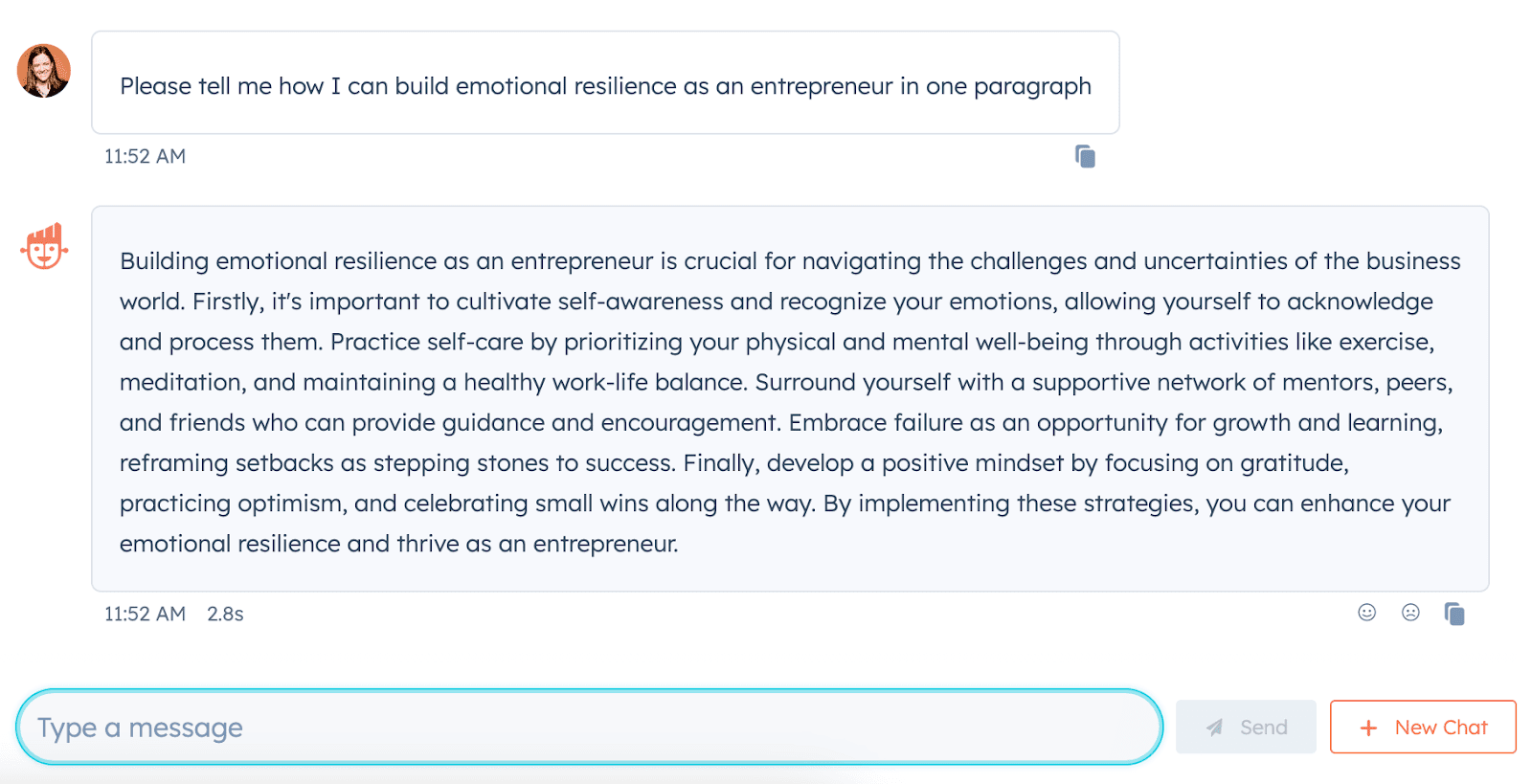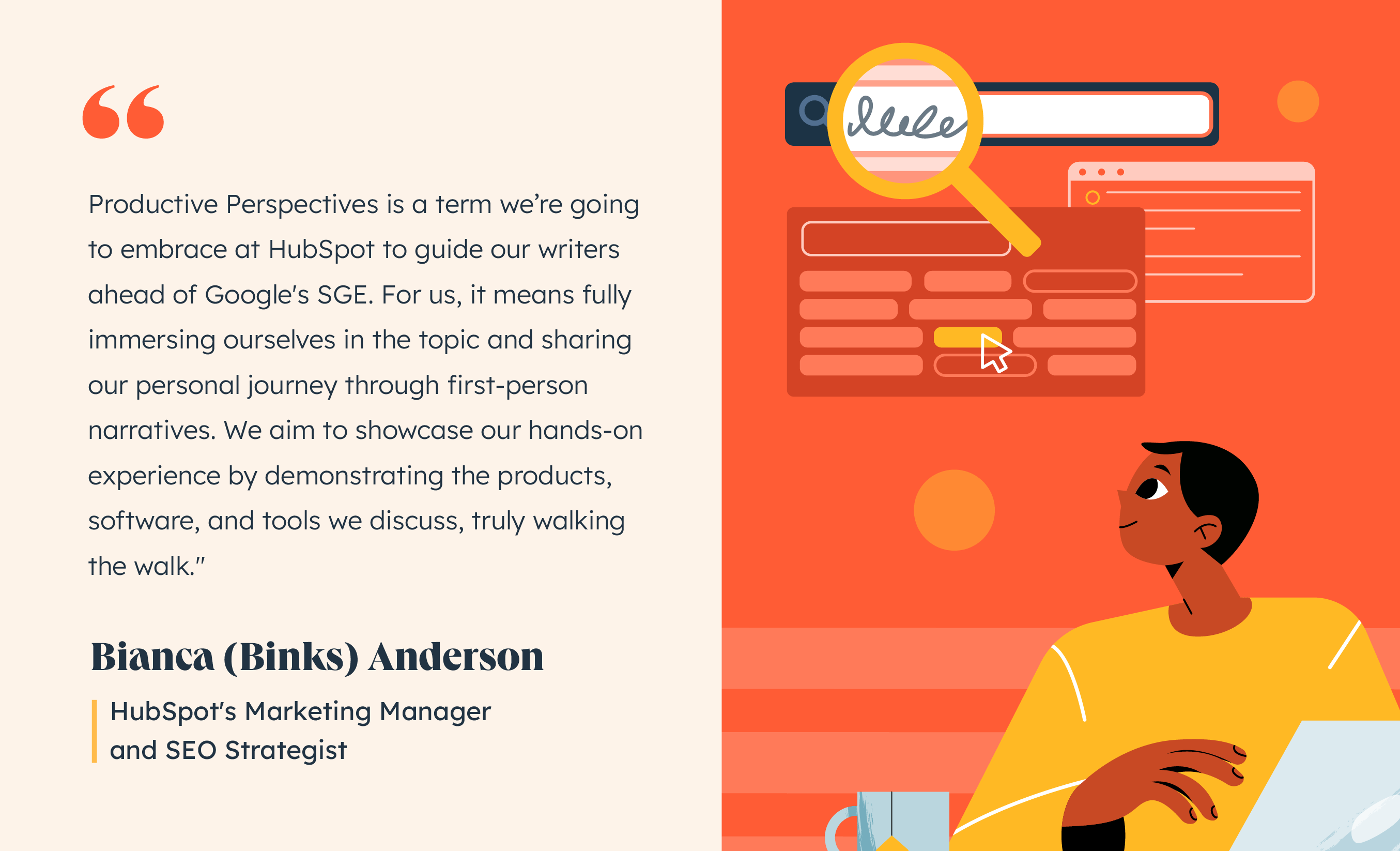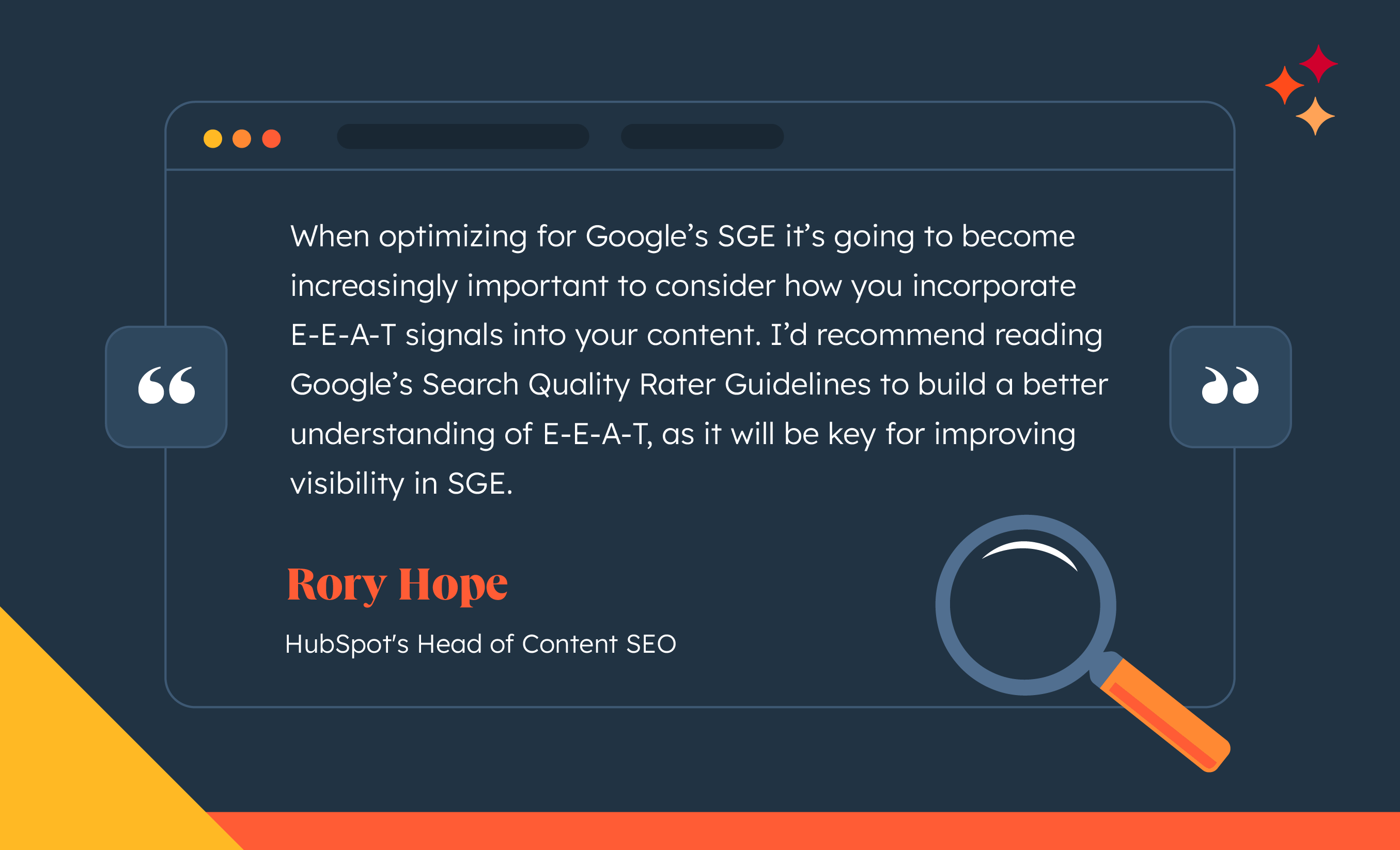Which Types of Content to Lean into Ahead of Google’s SGE — and What to Avoid
Once Google releases its search generative experience, one thing is for certain: The types of content that encourages traffic to your website will change tremendously.
Straightforward, cut-and-dry topics like “How to create a social media strategy” might not drive as much traffic to your website anymore. Instead, users will find the answers to queries like that directly on Google through the generative AI snapshot.
Which is an alarming thought. If some of your content is made redundant by generative AI, what could happen to your traffic and leads in a post-SGE world?
Fortunately, HubSpot’s SEO team has taken some of the guesswork out of it. Here, learn from HubSpot’s SEO experts on what types of content you’ll want to start leaning into in 2023 to continue directing traffic to your website — and what to avoid.
Which Types of Content to Lean into Ahead of Google’s SGE
1. Lean into personality-driven, thought-provoking content.
AI has a lot going for it. But, due to the nature of it being a robot, it inherently lacks one thing: A perspective.
Which is why you’ll want to ensure you start leaning into personality-driven thought leadership content that offers personal lessons, examples, and novel concepts that drive conversations forward.
As Aja Frost, HubSpot’s Director of SEO Global Growth, puts it, “As a result of the AI evolution, there is an exponential increase in the amount of AI-written, low-value content. And, in response to that, Google is prioritizing first-person, credible, personality-driven content.”
This makes sense. Google needs its AI models to continue to improve based on new information on the web. And new information – including new perspectives and ideas — can only come from real people.
For instance, consider what happens when I ask ChatSpot, “How do I build emotional resilience as an entrepreneur?”

ChatSpot’s answer includes plenty of tangible steps towards building resilience. But it lacks the nuance and complexity of real life.
Which is why it’s more helpful for me to turn to this post: “Bounce Back: Five Founders on Building Emotional Resilience“.
In the post, one founder, Michael Plisco, says, “As founders, we often find ourselves so deeply attached to our business and its mission that it becomes difficult to distinguish ourselves from what we are building. In failure, you have to take a step back and realize that the failure of the business, regardless of the situation, does not equate to a failure of self.”
Plisco then recommends getting back in touch with the things that make you happy, from spending time with friends and family to activities you haven’t had the time for since launching your business.
Consider that advice compared to ChatSpot’s advice to “Embrace failure as an opportunity for growth and learning, reframing setbacks as stepping stones to success.”
See the difference?
Ultimately, there are plenty of topics that deserve a quick, straightforward, cut-and-dry answer. I turn to ChatSpot all the time for topics like “Make me a workout plan,” “What is the top social media platform right now?”, and “Please give me five questions I should ask in an interview about product development and AI.”
AI can’t move the conversation forward into new territory with fresh, novel ideas. And it can’t fully relay the subtleties and nuances that many complex topics require. That’s where your content can truly shine.
2. First-person narratives will become increasingly crucial.
AI can round-up a long list of tools and provide a comprehensive analysis of each, but it can’t describe it’s own unique experience testing the tools out.
Which is where first-hand perspectives will become critical.
As HubSpot’s Marketing Manager and SEO Strategist, Bianca (Binks) Anderson, told me, “Productive Perspectives is a term we’re going to embrace at HubSpot to guide our writers ahead of Google’s SGE. For us, it means fully immersing ourselves in the topic and sharing our personal journey through first-person narratives.”

She continues, “We aim to showcase our hands-on experience by demonstrating the products, software, and tools we discuss, truly walking the walk.”
As we prepare for Google’s SGE roll-out, it’s vital you take a look at your existing strategy and consider where you can incorporate first-hand expertise. Rather than writing “The Top 10 Marketing Automation Tools”, perhaps you use a first-hand angle like, “I Tried These 5 Marketing Automation Tools: Here’s My Favorite”.
Along with helping you rank in a post-SGE world, incorporating first-person expertise also helps you build brand trust. Your readers want to know you have real-life experience on the topics about which you’re writing.
Anderson adds, “We also believe in taking a clear and confident stance on a topic, supported by first-hand research and data.”
She continues, “We believe that forming and articulating insightful opinions is a hallmark of genuine expertise. With Productive Perspectives, we strive to provide valuable content that resonates with our readers.”
3. You’ll need to incorporate E-E-A-T signals into your content.
Google’s Search Quality Evaluator Rating Guidelines rate E-E-A-T — which stands for Experience, Expertise, Authority, and Trustworthiness — as critical factors for ensuring your content ranks on Google, and E-E-A-T will become increasingly important after Google’s SGE release.
Which is why Rory Hope, HubSpot’s Head of Content SEO, advises all content creators to lean into these factors when creating content.
As he puts it, “When creating a piece of content, you’ll benefit from writing it through the real world experience of the author, whilst referencing the author or your company’s credentials to improve perceived expertise by search engines and users.”
He continues, “To improve authority, backlinks will remain important, so try to include primary research data or quotes when possible to make your content linkable and sharable. Depending on the content type, you should also add social proof or reviews onto the page, as this will help build trustworthiness.”
To prep for a post-SGE world, Hope recommends marketers read Google’s Search Quality Rater Guidelines to build a deeper understanding of E-E-A-T, which will help improve your visibility after SGE.

4. Lean into long-tail queries.
For a while now, marketers have heard the power of long-tail queries for ranking higher in the SERPs.
As a refresh: Head terms like “blogging” are generally searched for frequently, and are harder to rank for compared to long-tail phrases. So when considering your SEO strategy, you’ll want to make a list of long-tail phrases that could help you capture more traffic.
“How to write a blog post: a beginner’s guide,” for instance, is likely easier to rank for than “blogging”.
Senior Technical SEO Specialist Sylvain Charbit believes this will become increasingly important in a post-SGE world.
As he told me, “Prioritizing long-tail queries will become even more important as AI answers from Google are usually better in this case. Optimizing images and content around these more in-depth questions could lead to more visibility in the AI-generated responses.”
Be Prepared for Change
Regardless of the strategy shifts you decide work best for your business, one thing is certain: SGE will change how users’ search and find information. Which means, once SGE is rolled out, it will be critical your SEO and content strategist teams are prepared to test, iterate, and experiment to determine which new content plays work best for your business.
Take a look at The SEO Evolution: Expert Insights into the Future Landscape of Search if you’re interested in learning more about how SEO will change in 2023 and beyond.
![]()



